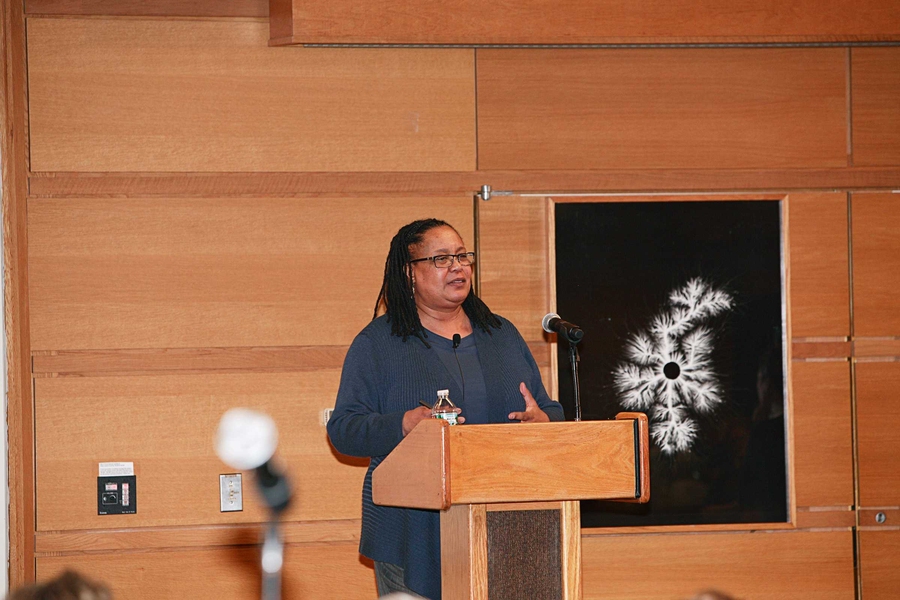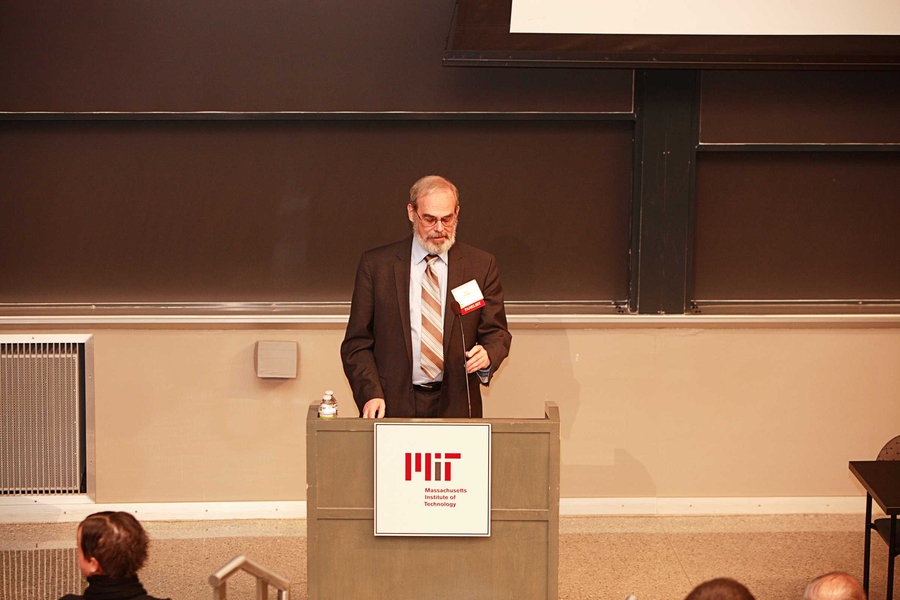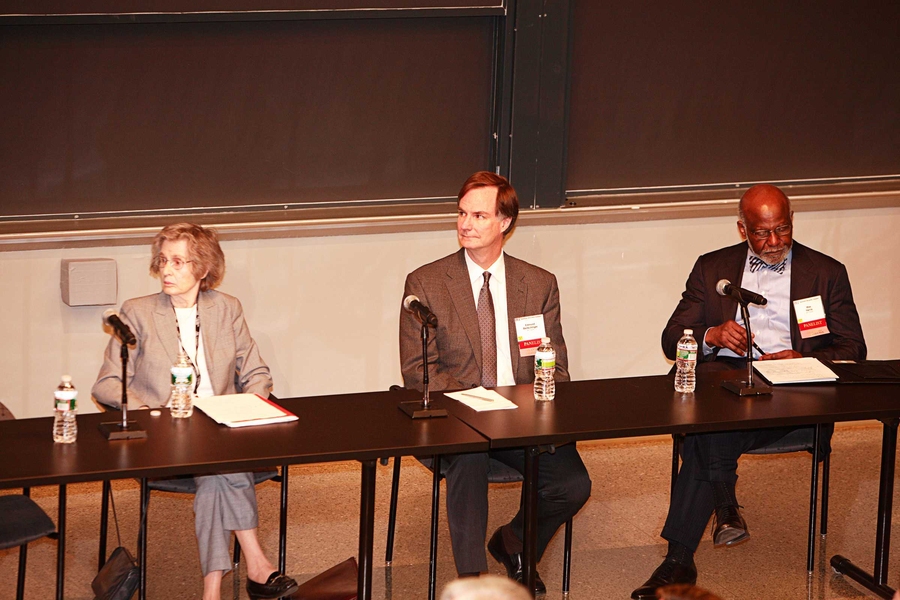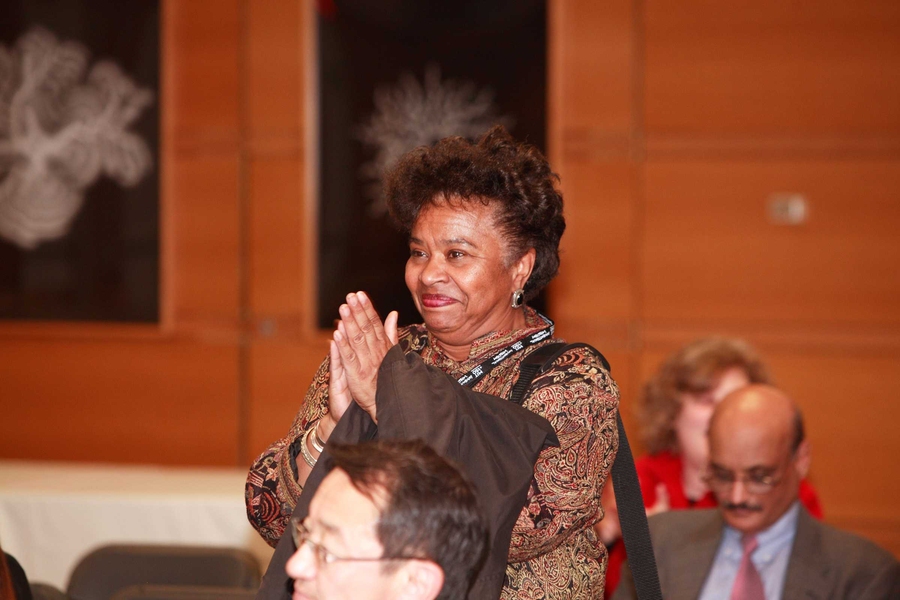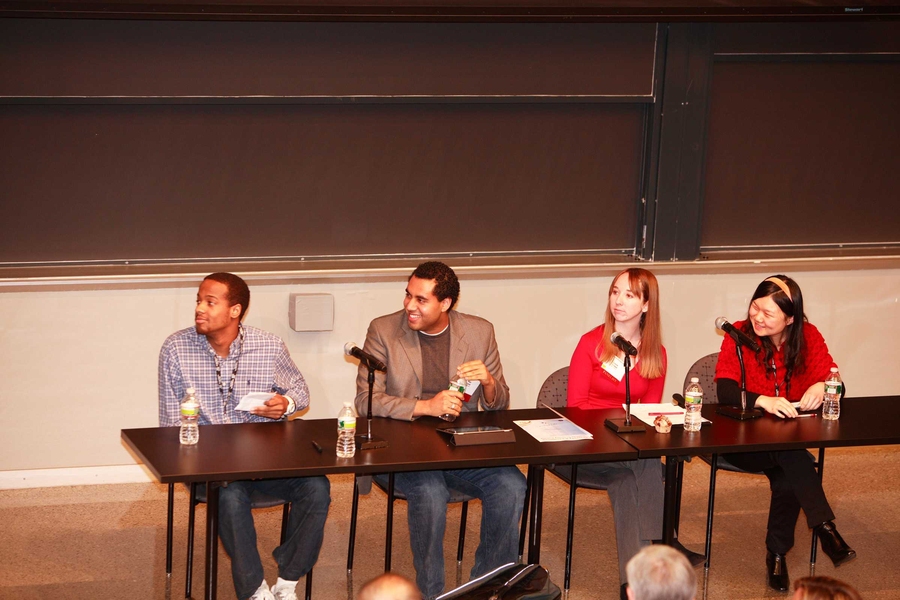In 2010, faculty from all five MIT schools released an assessment of diversity in the Institute’s faculty. The report of the Initiative on Faculty Race and Diversity, issued through the Office of the Provost, found that while recruitment and retention of underrepresented minority faculty had vastly improved in recent years, the “climate” around race and inclusion — the day-to-day experience of minority groups within MIT’s culture — is “distinctly and sometimes painfully different from that of their majority peers.” In particular, the report revealed a tension at MIT between diversity and excellence: a belief, whether right or wrong, that by seeking to make its faculty more diverse, MIT sacrifices its core value of academic excellence.
Last week, faculty, students and staff gathered to examine this underlying tension during the 2012 Institute Diversity Summit. During the daylong event, participants and audience members gathered in MIT’s 10-250 lecture hall for panel discussions and breakout sessions on race, gender and cultural awareness.
President Susan Hockfield launched the summit with a video address, affirming how far MIT has come since its homogenous roots.
“For a century or more, the Institute was chiefly composed of white men from New England,” Hockfield noted. “That is not, of course, the MIT that courses through the Infinite Corridor today.”
Hockfield observed that as MIT grew in scope, it also grew in its diversity and its achievements: “I’m convinced that those trend lines have risen together for a reason. … In the complex society that we serve, our diversity is essential to our excellence.”
MIT’s makeup has changed significantly in recent decades, both in gender and race. Today, 45 percent of undergraduates are women, compared with 15 percent in 1975. Among faculty, 21 percent are women, compared with 8 percent in 1980. Underrepresented minorities (URMs) make up one-quarter of the undergraduate body, compared with 10 percent in 1987. And 7 percent of today’s faculty are URMs — up from 3 percent in 1987.
Chancellor Eric Grimson sees today’s campus as a very different environment than the one he entered in 1975. As the campus grew more diverse, Grimson said, he observed a “change in atmosphere” as more women and minority groups added new perspectives to discussions in MIT’s labs, classrooms and hallways.
“We need to appreciate how a different mode of thought brings value to a problem,” Grimson said. “Excellence is enhanced precisely because no one viewpoint is best.”
Beyond numbers
While the numbers clearly show an increasingly diverse faculty and student population, Lotte Bailyn, the T. Wilson (1953) Professor of Management Emerita, cited a missed opportunity to make the MIT environment equally supportive of all groups. Bailyn helped draft the 2010 report on diversity, and said the Initiative on Faculty Race and Diversity found that while 39 percent of MIT faculty agreed that ethnic diversity was important to excellence, this percentage was mainly made up of minority faculty and women. These same groups said they did not enjoy the same climate or opportunities as white men at the Institute.
During the summit, Wesley Harris, a professor of aeronautics and astronautics and MIT’s associate provost for faculty equity, spoke of his personal challenges growing up in the segregated South. Harris attended elementary school in Virginia, never receiving brand-new textbooks. He and his classmates used books handed down from white schools, he said, with “the word, the big word, the ‘N’ word” written in the margins by white students who knew where the textbooks were headed.
Harris was raised with the mentality that “good” was never enough. “In the segregated South, you always had to be so strong — you could always stand alone, and be better and stronger than the opposition,” Harris said.
Harris recommended a scientific approach to evaluating diversity’s role in academic excellence. For example, he suggested tallying the number of patents, papers, startups and leadership roles held by a given group, and comparing the output against other groups as an “honest assessment.”
Outside the comfort zone
In addition to faculty viewpoints, the diversity summit showcased student voices. Graduate students Alex Evans and Sophie Ni spoke on a panel with postdoc Laura Lopez and undergraduate Eric Boyer ’13 on diversity within the student body.
“I think MIT is a very diverse place with a lot of different groups,” Boyer said. “But I don’t think the groups actually interact.”
Boyer said the lack of interaction partly stems from the heavy course load for freshmen. Because incoming students are stressed about labs and exams, they may not want to break out of their “comfort zone” to get to know other groups and cultures — opting instead to spend time with people of a similar background.
Boyer said MIT should consider requiring a freshman seminar entailing interaction with students from different cultures, “before they’re cemented into their major and only hang out with their one group of friends. … [Otherwise] that’s what happens at MIT because of the stress level.”
In the summit’s keynote address, Evelynn Hammonds SM ’80, dean of Harvard College and a professor of the history of science and of African and African American studies at Harvard University, spoke of the history of racial diversity in science and engineering. She noted that while there have been “fits and starts” in encouraging diversity in the sciences, there are no coordinated, well-directed programs in many ethnic communities to cultivate aspirations in science and engineering. Hammonds pressed for a long-term commitment to the issue of diversity in science, and identified a need for more mentoring programs to motivate students who might otherwise fall through the cracks.
“I’m not talking about diversity for diversity’s sake,” Hammonds said. “I’m talking about diversity for the search for the best possible talent throughout this community and ultimately throughout the country. It’s about the search for talent, and about not leaving talented people behind for social reasons.”
The Institute Diversity Summit was co-sponsored by the Committee on Race and Diversity and the Council on Staff Diversity and Inclusion.
Last week, faculty, students and staff gathered to examine this underlying tension during the 2012 Institute Diversity Summit. During the daylong event, participants and audience members gathered in MIT’s 10-250 lecture hall for panel discussions and breakout sessions on race, gender and cultural awareness.
President Susan Hockfield launched the summit with a video address, affirming how far MIT has come since its homogenous roots.
“For a century or more, the Institute was chiefly composed of white men from New England,” Hockfield noted. “That is not, of course, the MIT that courses through the Infinite Corridor today.”
Hockfield observed that as MIT grew in scope, it also grew in its diversity and its achievements: “I’m convinced that those trend lines have risen together for a reason. … In the complex society that we serve, our diversity is essential to our excellence.”
MIT’s makeup has changed significantly in recent decades, both in gender and race. Today, 45 percent of undergraduates are women, compared with 15 percent in 1975. Among faculty, 21 percent are women, compared with 8 percent in 1980. Underrepresented minorities (URMs) make up one-quarter of the undergraduate body, compared with 10 percent in 1987. And 7 percent of today’s faculty are URMs — up from 3 percent in 1987.
Chancellor Eric Grimson sees today’s campus as a very different environment than the one he entered in 1975. As the campus grew more diverse, Grimson said, he observed a “change in atmosphere” as more women and minority groups added new perspectives to discussions in MIT’s labs, classrooms and hallways.
“We need to appreciate how a different mode of thought brings value to a problem,” Grimson said. “Excellence is enhanced precisely because no one viewpoint is best.”
Beyond numbers
While the numbers clearly show an increasingly diverse faculty and student population, Lotte Bailyn, the T. Wilson (1953) Professor of Management Emerita, cited a missed opportunity to make the MIT environment equally supportive of all groups. Bailyn helped draft the 2010 report on diversity, and said the Initiative on Faculty Race and Diversity found that while 39 percent of MIT faculty agreed that ethnic diversity was important to excellence, this percentage was mainly made up of minority faculty and women. These same groups said they did not enjoy the same climate or opportunities as white men at the Institute.
During the summit, Wesley Harris, a professor of aeronautics and astronautics and MIT’s associate provost for faculty equity, spoke of his personal challenges growing up in the segregated South. Harris attended elementary school in Virginia, never receiving brand-new textbooks. He and his classmates used books handed down from white schools, he said, with “the word, the big word, the ‘N’ word” written in the margins by white students who knew where the textbooks were headed.
Harris was raised with the mentality that “good” was never enough. “In the segregated South, you always had to be so strong — you could always stand alone, and be better and stronger than the opposition,” Harris said.
Harris recommended a scientific approach to evaluating diversity’s role in academic excellence. For example, he suggested tallying the number of patents, papers, startups and leadership roles held by a given group, and comparing the output against other groups as an “honest assessment.”
Outside the comfort zone
In addition to faculty viewpoints, the diversity summit showcased student voices. Graduate students Alex Evans and Sophie Ni spoke on a panel with postdoc Laura Lopez and undergraduate Eric Boyer ’13 on diversity within the student body.
“I think MIT is a very diverse place with a lot of different groups,” Boyer said. “But I don’t think the groups actually interact.”
Boyer said the lack of interaction partly stems from the heavy course load for freshmen. Because incoming students are stressed about labs and exams, they may not want to break out of their “comfort zone” to get to know other groups and cultures — opting instead to spend time with people of a similar background.
Boyer said MIT should consider requiring a freshman seminar entailing interaction with students from different cultures, “before they’re cemented into their major and only hang out with their one group of friends. … [Otherwise] that’s what happens at MIT because of the stress level.”
In the summit’s keynote address, Evelynn Hammonds SM ’80, dean of Harvard College and a professor of the history of science and of African and African American studies at Harvard University, spoke of the history of racial diversity in science and engineering. She noted that while there have been “fits and starts” in encouraging diversity in the sciences, there are no coordinated, well-directed programs in many ethnic communities to cultivate aspirations in science and engineering. Hammonds pressed for a long-term commitment to the issue of diversity in science, and identified a need for more mentoring programs to motivate students who might otherwise fall through the cracks.
“I’m not talking about diversity for diversity’s sake,” Hammonds said. “I’m talking about diversity for the search for the best possible talent throughout this community and ultimately throughout the country. It’s about the search for talent, and about not leaving talented people behind for social reasons.”
The Institute Diversity Summit was co-sponsored by the Committee on Race and Diversity and the Council on Staff Diversity and Inclusion.
